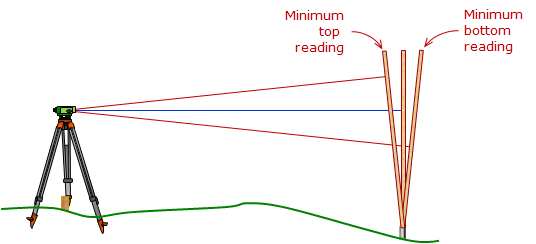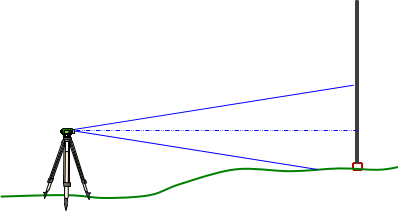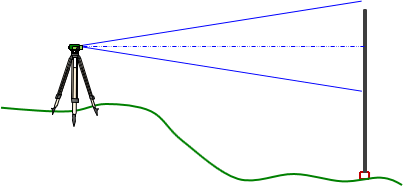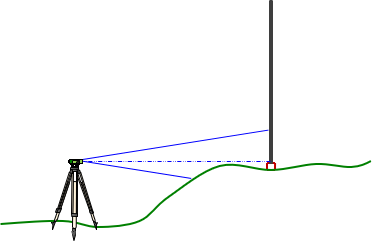4. Error Sources and Behavior
Errors affecting differential leveling also affect three-wire leveling. Additional errors by sources include:
a. Instrumental
(1) Uneven stadia wire spacing
(a) Principle and Behavior
While sometimes an error on older instruments, this is generally not an issue on modern ones. If one sub-interval is consistently larger or smaller than the other, then there may be an instrumental error. Sub-intervals are a function of distance, making the error systematic.
(b) Compensation
Balancing BS and FS distances differences allow wire spacing errors to compensate.
(2) Incorrect stadia multiplier
(a) Principle and Behavior
The multiplier is based on the stadia wire spacing with most modern instruments having a multiplier of 100. An incorrect multiplier introduces a systematic error.
(b) Compensation
If stadia is used to balance BS and FS distances, then the systematic error is irrelevant.
What if the distances are needed for a proportional adjustment of a level circuit? Does the error in them affect the adjustment? No, because each distance is increased or decreased by the same amount, as is their total.
(3) Rod bubble
(a) Principle and Behavior
In three-wire leveling, a rod bubble must used to hold the rod vertical. Waving the rod, as for differential leveling, does not work for three-wire leveling. The lines of sight for the top and bottom wires are not horizontal so their correct readings do not occur at their minimum values, Figure G-7.
|
|
| Figure G-7 Rod Waving Error |
(b) Compensation
Use an adjusted rod bubble to ensure the rod is held vertically.
b. Natural
(1) Obstructed wire
(a) Principle and Behavior
Because the stadia wire spread increases with distance, the bottom wire may "ground out", Figure G-8(a), or top wire pass over the rod, G-8(b).
|
|
|
| (a) Bottom Wire | (b) Top Wire |
| Figure G-8 Wire Missing Rod |
|
The behavior is systematic because it is based on distance.
(b) Compensation
Sight distances should be kept short to ensure all three wires can be read on the rod. Distances may need to be further shortened on rolling terrain, Figure G-9.
|
|
| Figure G-9 Rolling Terrain |
The surveyor could use the middle wire reading instead of the average of all three and double the single sub-interval to determine the distance. This shouldn't be done because:
- there are no reading checks
- the center reading isn't as accurate as an average is
- doubling the sub-interval magnifies the reading errors
c. Personal
Because there are more readings and running computations, there is greater opportunity for reading, recording, and calculation mistakes. Mistake reduction comes from experience and diligence.



